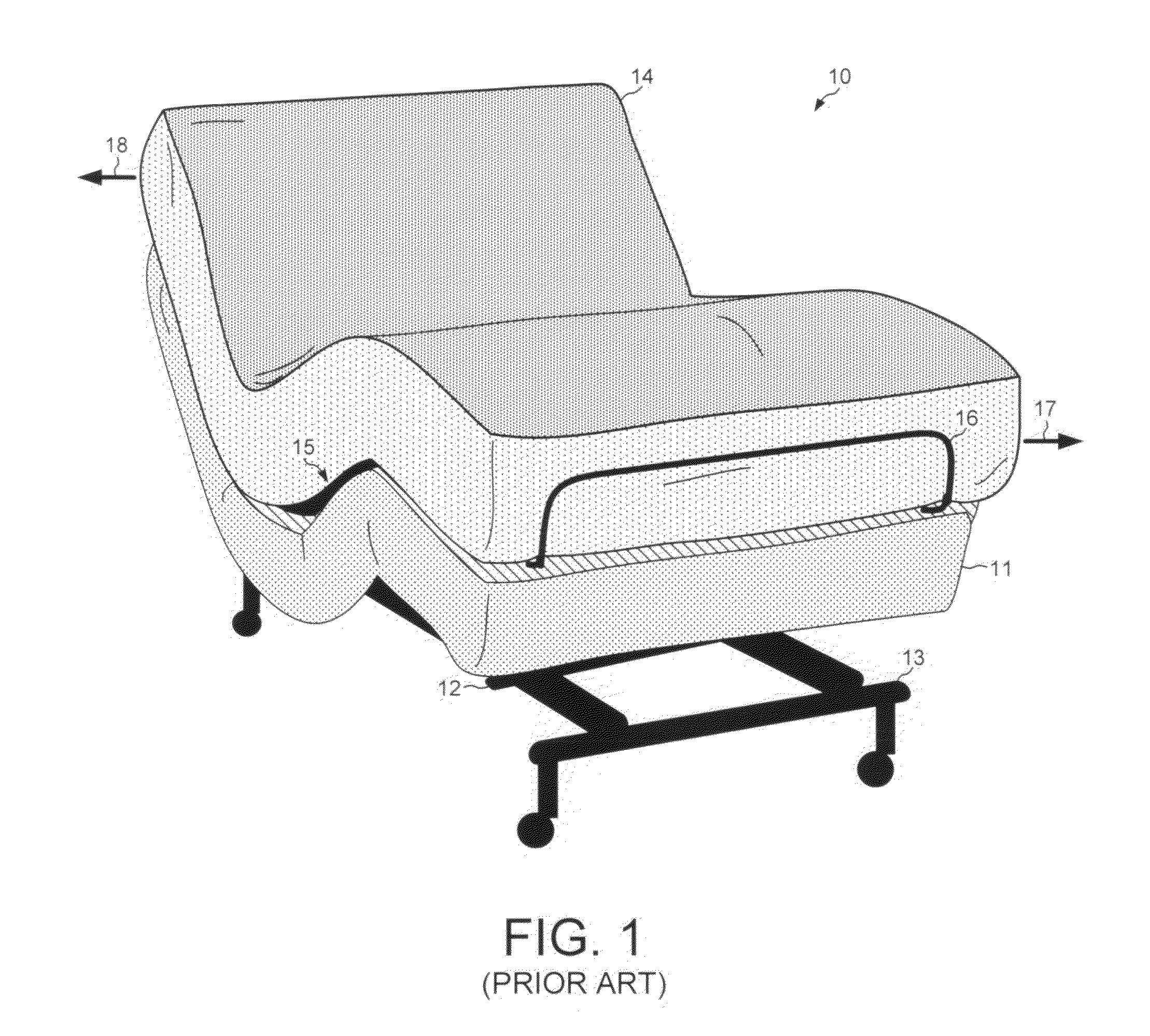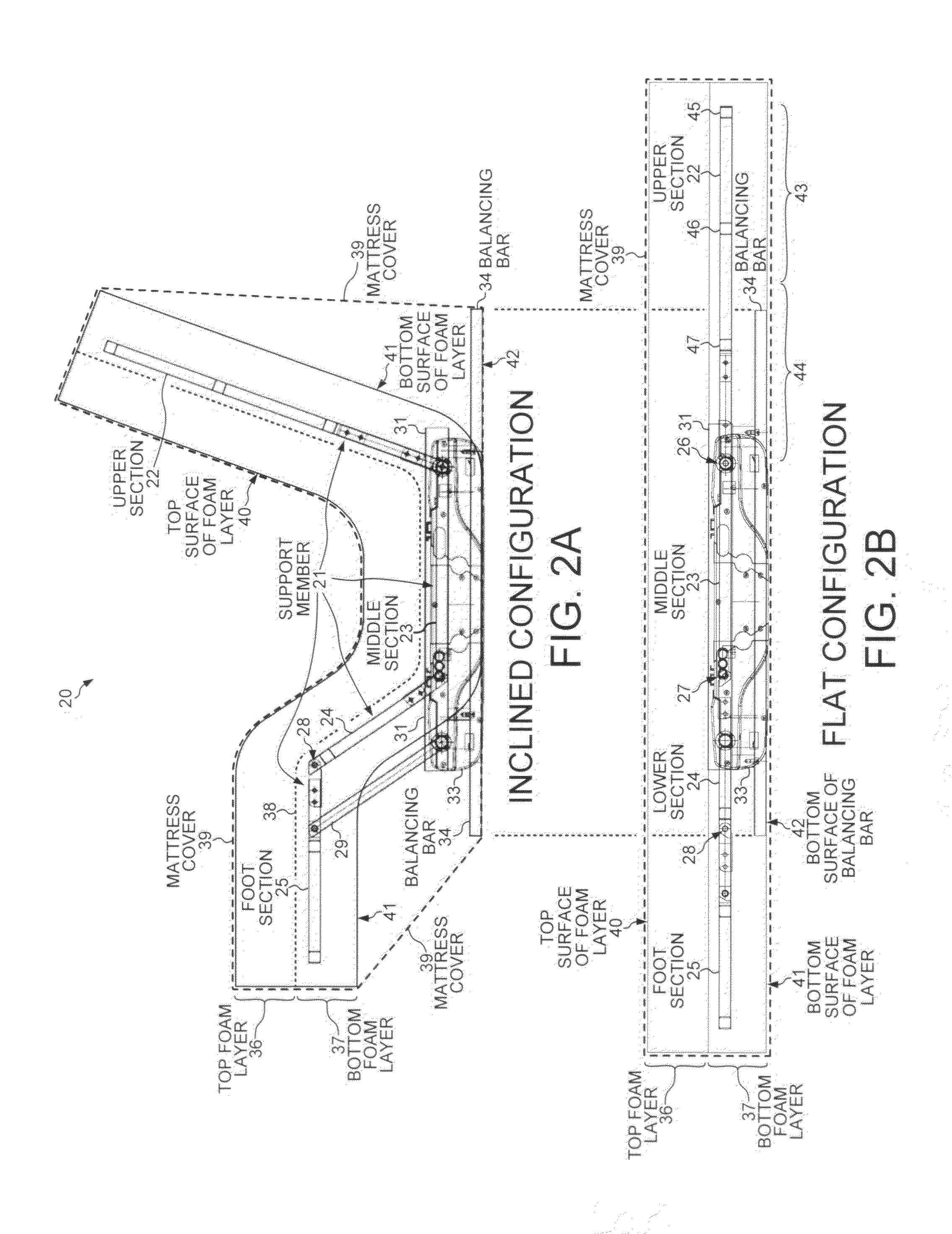Self-adjusting mattress with balancing bars and an integrated movement mechanism
a self-adjusting, mattress technology, applied in the direction of beds, couches, rigid tables, etc., can solve the problems of inability to use a conventional adjustable bed in combination with a box spring or platform bed, the inconvenience of adjusting the bed, and the inability to adjust the bed. to achieve the effect of less likely to tear and separa
- Summary
- Abstract
- Description
- Claims
- Application Information
AI Technical Summary
Benefits of technology
Problems solved by technology
Method used
Image
Examples
Embodiment Construction
[0036]FIGS. 2A and 2B are schematic diagrams of a self-adjusting foam mattress 20 with balancing bars and an integrated movement mechanism. Self-adjusting mattress 20 has a support member 21 that is integrated into the mattress. Mattress 20 can adjust itself from a flat configuration into one of multiple inclined configurations without a separate adjustable support member used by conventional adjustable beds. Mattress 20 can be placed directly on a conventional box spring or platform bed just as a typical foam mattress. Thus, the user of self-adjusting mattress 20 can retain her existing platform bed or box spring and headboard and simply swap out the old mattress. The user of mattress 20 need not forego the aesthetic qualities of the platform bed or headboard and footboard.
[0037]FIG. 2A is a side view of adjustable mattress 20 in one predetermined inclined configuration that would be comfortable for reading or watching television. Support member 21 includes an upper section 22, a m...
PUM
| Property | Measurement | Unit |
|---|---|---|
| thick | aaaaa | aaaaa |
| thick | aaaaa | aaaaa |
| stretchable | aaaaa | aaaaa |
Abstract
Description
Claims
Application Information
 Login to View More
Login to View More - R&D
- Intellectual Property
- Life Sciences
- Materials
- Tech Scout
- Unparalleled Data Quality
- Higher Quality Content
- 60% Fewer Hallucinations
Browse by: Latest US Patents, China's latest patents, Technical Efficacy Thesaurus, Application Domain, Technology Topic, Popular Technical Reports.
© 2025 PatSnap. All rights reserved.Legal|Privacy policy|Modern Slavery Act Transparency Statement|Sitemap|About US| Contact US: help@patsnap.com



